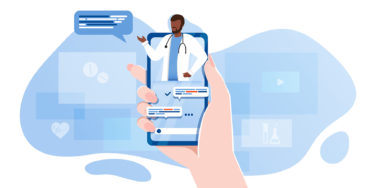In today’s marketplace, biopharmaceutical companies face numerous challenges from cost containment to patent expiration.1 Pharma companies are increasingly looking to alliances, collaborations, acquisitions, and generics as opportunities for growth. According to a 2014 analysis by The Tufts Center for the Study of Drug Development at Tufts University, a nonprofit think tank, developing a new prescription medicine from the lab to marketing approval costs an estimated $2.6 billion.2 The high cost of innovation has led many companies to extend and diversify their footprint with generics.
Generic drug use generated more than $1.2 trillion in savings to the healthcare system during a 10-year period between 2003 and 2012, and in 2012, generics saved the U.S. health system $217 billion, up from $188 billion in 2011, according to the Generic Pharmaceutical Association.3 Due to their affordability, generic use is growing—according to the U.S. Food and Drug Administration (FDA), 80% of prescriptions are filled with generics, which can cost up to 85% less than their brand counterparts.2
AGs: Brand Equivalents at Generic Prices
The FDA grants pharmaceutical companies exclusivity to market their products for up to 20 years from the date of a drug’s filing, after which the patent expires.4 Maximizing patent term is an effective strategy to extend a product’s lifecycle.5 Once the patent expires, generic competition can begin.
Authorized generics (AGs) are copies of brand name drugs. They have the identical chemical makeup, strength, active and inactive ingredients as the original medications approved by the FDA. An “authorized” designation means the product received authorization from the original manufacturer to be available as a generic. AGs are supplied in the same dosage form and route of administration—for example, if the brand was a pill form, the AG is a pill form, and their route of administration is identical to the brand product. AGs generally have packaging components, NDC codes, trade names, or trademarks that differ from those of their brand name equivalents. 6,7
Like AGs, generics have the same active ingredients, quality, safety and strength as brand name drugs, but their colors, flavors and certain other parts may be different,8 and more than one company may supply generics.9 FDA acknowledges that some people have reported undesired effects when switching from a brand name drug to a generic formulation or from one generic drug to another generic drug, and encourages generic companies to better understand why and the extent to which these problems may occur.10
Both AGs and generics are highly regulated and undergo rigorous approval processes, resulting in safe and effective treatments for patients. Developing authorized generics of brands that have lost patent protection is an important part of the lifecycle management of a medicine. The goal is to maximize the value of the original brand while offering quality medicines at affordable prices to the patient. According to the Academy of Managed Care Pharmacy, marketing of AGs increases competition, promoting lower prices for pharmaceuticals.11
Winthrop, Sanofi’s generic business in the U.S., manufactures five authorized generics and manages more than 20 established medicines. Through Winthrop, Sanofi offers patients high quality authorized generic medicines that are affordable, and used across multiple therapeutic areas. Our generic medicines are essential to the operating income of Sanofi. In the U.S. alone, they contributed €171 million in 2015 product sales. Revenue generated from our Winthrop portfolio helps fund Sanofi R&D, contributing to long-term company growth and commercialization for tomorrow’s treatments. Our work taps into new opportunities for high quality medicines and expands our capabilities with development programs that benefit patients. As part of our diversification business strategy, Winthrop U.S. also collaborates with our Global Generics Division to develop and bring niche, or difficult to manufacture, generics to the U.S. market.
Authorized generics represent one option to ensure that patients receive the same quality treatments they expect from trusted brands, and in turn, can help companies fulfill their commitment to provide high quality products and affordable solutions to customers and the patients who need them. With strategic lifecycle management, pharma will continue identifying novel ways to maximize and protect its market presence in order to effectively serve patients.
References:
1. Kaitin KL, “Deconstructing the Drug Development Process: The New Face of Innovation.” Clin Pharmacol Ther. 2010 Mar; 87(3): 356–361. Published online 2010 Feb 3. doi: 10.1038/clpt.2009.293
2. Tufts Center for the Study of Drug Development. “Cost of Developing a New Drug.” November 18, 2014. http://csdd.tufts.edu/files/uploads/Tufts_CSDD_briefing_on_RD_cost_study_-_Nov_18,_2014..pdf. Last accessed: January 24, 2016.
3. Generic Pharmaceutical Association. “Generic Drug Savings in the U.S.” http://www.gphaonline.org/media/cms/2013_Savings_Study_12.19.2013_FINAL.pdf. Last accessed: January 24, 2016.
4. FDA. “Frequently Asked Questions on Patents and Exclusivity.” http://www.fda.gov/Drugs/DevelopmentApprovalProcess/ucm079031.htm. Last accessed: February 4, 2016.
5. Gupta, H., et al. “Patent Protection Strategies,” J Pharm Bioallied Sci. 2010 Jan-Mar; 2(1): 2–7, http://www.ncbi.nlm.nih.gov/pmc/articles/PMC3146086/. Last accessed: February 12, 2016.
6. FDA. “Facts About Generic Drugs.” http://www.fda.gov/Drugs/ResourcesForYou/Consumers/BuyingUsingMedicineSafely/UnderstandingGenericDrugs/ucm167991.htm. Last accessed: January 24, 2016.
7. FDA. “FDA List of Generic Drugs.” http://www.fda.gov/drugs/developmentapprovalprocess/howdrugsaredevelopedandapproved/approvalapplications/abbreviatednewdrugapplicationandagenerics/ucm126389.htm. Last accessed: January 24, 2016.







